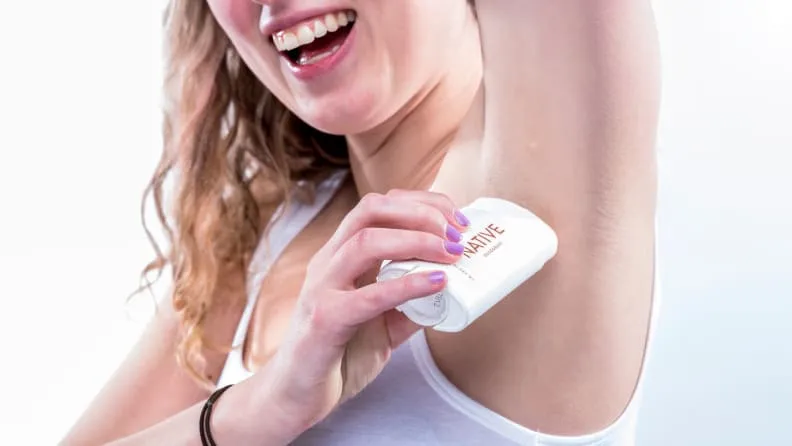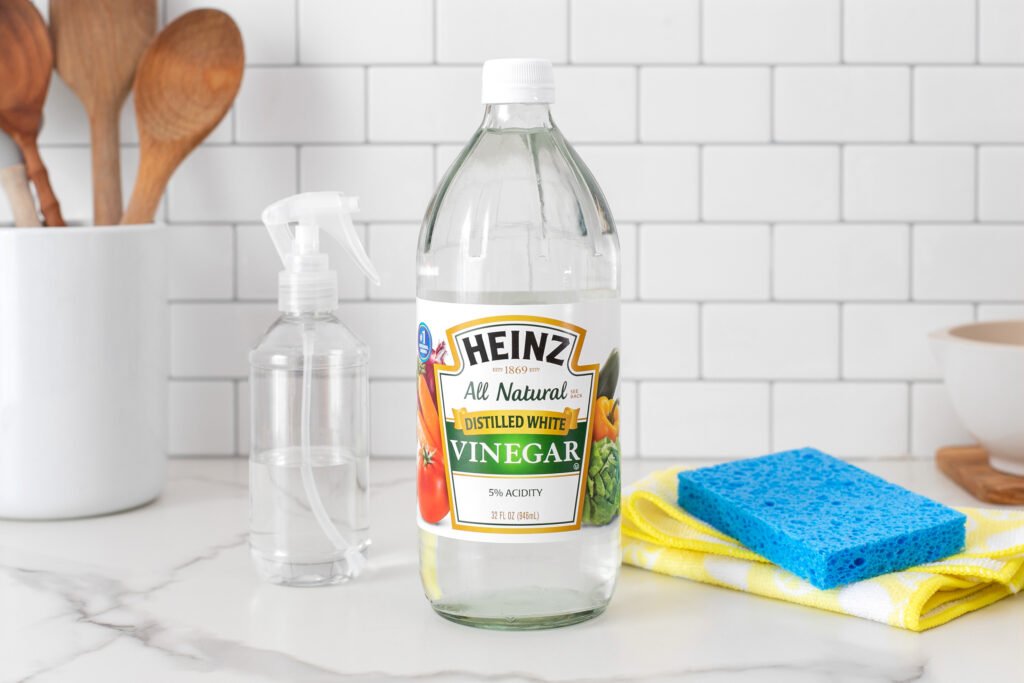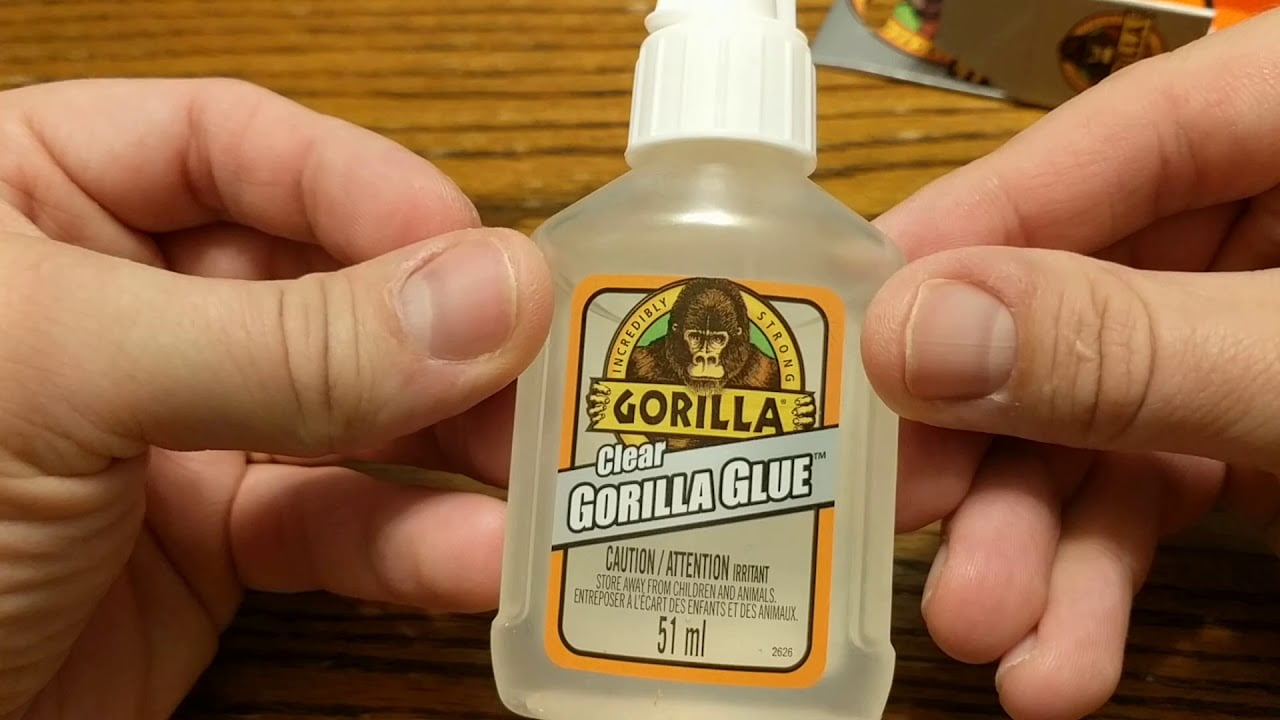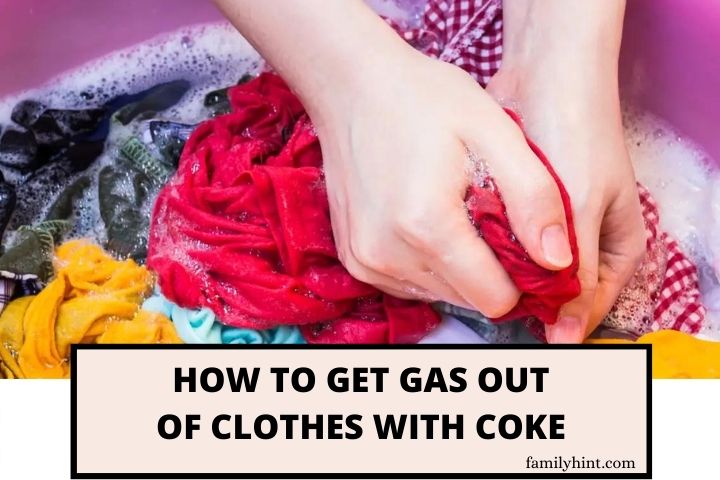
White clothes are a staple in most wardrobes, but they can lose their brightness and turn yellow over time. This can be frustrating, especially when you want to keep your white garments looking fresh and clean. Fortunately, several effective methods exist to prevent and reverse yellowing in white clothes. By adopting proper laundry practices, using the right products, and being mindful of potential causes, you can maintain the whiteness of your wardrobe staples and enjoy the timeless elegance of white garments.
In this article, we will explore why white clothes turn yellow, the effects of yellowing on white clothes, and provide tips to prevent yellowing in the first place. More importantly, we will discuss practical ways on how to get white clothes white again.
Why White Clothes Turn Yellow? Top 10 Causes

Yellowing in white clothes can be attributed to several factors, ranging from natural aging to improper washing and storage practices. Some common causes of yellowing in white clothes include:
1. Sweat and Body Oils: Sweat and body oils can accumulate on white clothes, especially on the collar, underarms, and cuffs. Over time, these substances can react with detergents and other chemicals, leading to yellowing.
2. Residue Buildup: Using too much detergent or fabric softener and not rinsing clothes thoroughly can result in detergent residue buildup on the fabric. This residue can attract dirt and oils, causing yellowing over time.
3. Hard Water: Washing white clothes in hard water with a high mineral content can leave mineral deposits behind the fabric, leading to a yellowish tint.
4. Exposure to Sunlight: Prolonged exposure to sunlight can cause white fabrics to turn yellow, as ultraviolet rays can weaken and break down the fibers.
5. Aging and Oxidation: With time, white clothes may naturally undergo oxidation, where the fabric reacts with oxygen in the air, resulting in a yellowish hue.
6. Stains and Spills: Stains from food, beverages, or other substances can set into white clothes and cause yellowing, especially if not treated promptly and effectively.
7. Bleach Damage: Overusing or improperly diluting bleach can weaken the fabric and cause yellowing or discoloration.
8. Improper Storage: Storing white clothes in damp or humid conditions, or using plastic bags for storage, can promote mildew growth, leading to yellowing.
9. Residue from Hard Water Detergents: Detergents formulated for hard water can leave behind residues on white clothes, leading to yellow stains.
10. Chemical Reactions: Certain chemicals in skincare products, perfumes, or even cleaning agents can react with the fabric and cause yellowing.
Preventing yellowing in white clothes involves proper laundry practices and using suitable products. Regularly pre-treating stains, using the right laundry detergents, avoiding excessive heat during washing and drying, and storing clothes in a clean and dry environment can help maintain the whiteness of white garments over time.
Effects of Yellowing on White Clothes
The yellowing of white clothes can significantly impact their overall appearance. It can make them look dingy and unkempt, which is not ideal, especially for special occasions or professional settings. Yellowed white clothes may also be more prone to staining, and it can be challenging to remove these stains. Moreover, the yellowing can affect the fabric’s integrity over time, leading to a shortened lifespan for the garment.
Tips to Prevent Yellowing in White Clothes
To keep your white clothes looking bright and pristine, here are some tips to prevent yellowing:
- Separate white clothes from colored ones during laundry to avoid color transfer.
- Use a detergent specifically formulated for white clothes to help maintain their whiteness.
- Pre-treat any stains on white clothes before washing them to prevent them from settling in.
- Avoid using excessive laundry detergent, which can leave residue on the fabric.
- Avoid leaving white clothes in direct sunlight for prolonged periods, which can cause fading.
How to Get White Clothes White Again? 6 Ways to Whiten Yellowed Clothes

If your white clothes have already started to turn yellow, there are several methods you can try to restore their whiteness. The most common methods include using vinegar, bleach, and baking soda.
1. Using Vinegar
Vinegar is a versatile household ingredient used for various cleaning purposes, including whitening white clothes. Here is how you can use vinegar to whiten yellowed white clothes:
Step 1: Soaking the clothes in vinegar
Fill a basin or sink with warm water and add one cup of distilled white vinegar. Submerge the yellowed clothes in the vinegar solution and let them soak for at least 30 minutes to an hour. The vinegar will help break down and remove any accumulated oils and residue on the fabric.
Step 2: Washing the clothes with vinegar
After soaking, transfer the clothes to the washing machine. Add half a cup of white vinegar to the detergent compartment and run a normal wash cycle using cold water. The vinegar will act as a natural whitener and brighten the white clothes without damaging the fabric.
Step 3: Rinse and dry the clothes
Once the wash cycle is complete, remove the clothes from the washer and rinse them thoroughly with clean water. Hang or lay the clothes flat to dry, preferably under indirect sunlight. Avoid using a dryer, as heat can set any remaining stains or yellowing.
2. Using Bleach
Bleach is a powerful whitening agent that removes stains and yellowing from white clothes. However, it is essential to use bleach carefully, as it can damage certain fabrics and cause color loss. Here is a step-by-step guide to using bleach:
Step 1: Preparing the bleach solution
If your clothes suit bleach, dilute 3/4 cup chlorine bleach or 1 1/2 cups of oxygen bleach in a gallon of water. Follow the instructions on the bleach packaging for proper dilution ratios.
Step 2: Soaking the clothes in the bleach solution
Place the yellowed clothes in the bleach solution and let them soak for 15 to 30 minutes. Make sure to agitate the clothes occasionally to ensure even bleaching. Remember that bleach should only be used on white or colorfast garments to prevent damage.
Step 3: Washing and rinse the clothes
After soaking, remove the clothes from the bleach solution and wash them in the washing machine using an appropriate laundry detergent. Use cold water for the wash cycle. Finally, rinse the clothes thoroughly to remove any remaining bleach residue.
3. Using Baking Soda
Baking soda is a kitchen staple and a natural cleaning agent that can help whiten yellowed white clothes. Here is how you can use baking soda:
Step 1: Creating a baking soda paste
Mix half a cup of baking soda with enough water in a small bowl to create a thick paste. The consistency should be similar to that of toothpaste. Baking soda has gentle abrasive properties that can help lift stains and brighten the fabric.
Step 2: Applying the baking soda paste to the yellowed areas
Using a clean cloth or a soft-bristled brush, apply the baking soda paste directly to the yellowed areas of the white clothes. Gently rub the paste into the fabric, focusing on the stained or discolored sections. Let the paste sit for at least 30 minutes to penetrate the fabric.
Step 3: Washing and rinse the clothes
After the paste has had time to work its magic, transfer the clothes to the washing machine and wash them, as usual, using cold water and an appropriate laundry detergent. Ensure that all traces of the baking soda paste are rinsed out during the rinse cycle.
4. Using Hydrogen Peroxide
Hydrogen peroxide is another effective whitening agent for yellowed white clothes. Here’s how you can use it:
Step 1: Spot-treat the yellowed areas
Dampen a clean cloth with hydrogen peroxide and gently dab it onto the yellowed areas of the clothes. Allow the hydrogen peroxide to sit on the fabric for a few minutes, but avoid letting it dry, as it may cause fabric damage.
Step 2: Rinse the clothes
After spot-treating, rinse the clothes thoroughly with cold water to remove any excess hydrogen peroxide.
Step 3: Wash the clothes
Place the clothes in the washing machine and run a regular wash cycle using cold water and an appropriate laundry detergent. Hydrogen peroxide will continue to work during the wash, helping to brighten the fabric.
5. Using Lemon Juice
Lemon juice is a natural bleaching agent and can be used to whiten yellowed white clothes. Follow these steps:
Step 1: Prepare the lemon juice solution
Mix equal parts of lemon juice and water in a basin or sink. Submerge the yellowed clothes in the lemon juice solution and let them soak for a few hours, preferably in the sunlight.
Step 2: Wash the clothes
After soaking, transfer the clothes to the washing machine using cold water and laundry detergent. Lemon juice will help break down stains and brighten the fabric during the wash.
Step 3: Dry the clothes
After washing, hang the clothes to dry under sunlight. The natural bleaching properties of lemon juice combined with sunlight will further enhance the whitening effect.
6. Using Commercial Whitening Agents
If the natural methods mentioned above don’t provide the desired results, you can also consider using commercial whitening agents specifically designed for laundry. Follow the instructions on the product label carefully and use them as directed.
It’s important to note that some fabrics may not be suitable for specific whitening methods, and it’s always best to perform a patch test on a small, inconspicuous area of the fabric before applying any treatment.
Additionally, it’s advisable to read and follow the care instructions on clothing labels to prevent damage to the garments. By using these methods responsibly, you can effectively whiten yellowed white clothes and extend the life of your cherished garments.
Tips to Keep Your White Clothes White
In addition to whitening yellowed white clothes, it’s essential to adopt habits that help maintain the whiteness of your garments in the long run. Here are some tips:
Separate White Clothes From Colored Ones
When doing laundry, separate white clothes from colored ones to prevent color transfer. Washing white clothes separately minimizes the risk of color bleeding and helps maintain their brightness.
Use the Right Detergent
Choose a detergent specifically formulated for white clothes. These detergents contain brightening agents that can help keep your white garments white. Follow the recommended amount for each load to avoid residue buildup.
Pre-treat Stains
To prevent stains from setting in and causing yellowing, it’s important to pre-treat any stains on white clothes before washing. Follow the instructions on the stain remover product and test it on a small, inconspicuous area of the fabric first.
Wash in Cold Water
Washing white clothes in cold water can help preserve their whiteness and prevent shrinking or fading. Cold water is effective in removing most stains and dirt without causing damage to the fabric.
Avoid Overloading the Washing Machine
Overloading the washing machine with too many clothes can lead to inadequate cleaning and rinsing, resulting in dingy white clothes. Follow the recommended load capacity to ensure proper washing and maintain the brightness of your garments.
Sun-Dry Your White Clothes
Sunlight is a natural bleaching agent and can help brighten white clothes. Whenever possible, hang your white garments outside to dry in the sun. The sunlight helps whiten the clothes and provides a fresh outdoor scent.
Store White Clothes Properly
Store your white clothes in a clean and dry place, away from direct sunlight, to prevent yellowing or discoloration over time. Avoid using plastic bags for storage, which can trap moisture and lead to mildew growth.
Use Baking Soda as a Natural Whitener
Baking soda can be a natural and gentle whitener for white clothes. Add half a cup of baking soda to the washing machine and your regular detergent to help brighten and freshen your white garments.
Be Mindful of Sweat and Deodorant
Sweat and deodorant stains can cause yellowing on white clothes. Rinse or pre-treat these stains promptly before washing them to prevent them from becoming permanent.
Regularly Clean Your Washing Machine
Periodically clean your washing machine to remove any detergent residue or dirt buildup that may affect the cleanliness of your white clothes. Follow the manufacturer’s instructions for maintenance and cleaning.
By incorporating these tips into your laundry routine, you can keep your white clothes looking crisp and bright, ensuring they stay a timeless and classic part of your wardrobe.
Frequently Asked Questions
Q: How can I whiten white clothes that have yellowed?
A: There are several ways to whiten white clothes that have yellowed. One popular method is to soak the clothes in vinegar and water. White vinegar, also known as distilled white vinegar, is particularly effective in removing yellow stains and brightening white clothes. Another option is chlorine or oxygen bleach, depending on the fabric care instructions. Baking soda is another common ingredient that can help remove stains and whiten clothes.
Q: How does vinegar help whiten white clothes?
A: Vinegar, specifically white vinegar, is a natural whitening agent. It works by breaking down and removing the yellowing substances that may be present in white clothes. The acid in vinegar helps to dissolve the stains and brighten the fabric. Additionally, vinegar can help remove odors from the clothes.
Q: Can I use bleach to whiten my white clothes?
A: Yes, bleach is commonly used to whiten white clothes. Two types of bleach can be used: chlorine bleach and oxygen bleach. Chlorine bleach is a strong whitening agent but should be used cautiously as it can damage certain fabrics. Oxygen bleach, on the other hand, is safer for most fabrics and can effectively whiten clothes without the risk of damage. It is important to follow the instructions on the bleach packaging and to check the fabric care labels before using bleach.
Q: How can baking soda help whiten white clothes?
A: Baking soda is a versatile household ingredient that can be used to whiten white clothes. It has natural whitening properties and can help remove stains and odors from the fabric. To use baking soda, add one cup of baking soda to your regular laundry detergent when washing your white clothes. Alternatively, you can create a paste by mixing baking soda with water and applying it directly to the stains before washing.
Q: Can I use vinegar and baking soda to whiten white clothes?
A: You can combine vinegar and baking soda to whiten white clothes. Start by soaking the clothes in water and vinegar for about 30 minutes. Then, create a paste by mixing baking soda with water and applying it to the yellowed areas. Let the paste sit for a few minutes before washing the clothes as usual. This combination can effectively remove stains and whiten white clothes.
Q: How long should I soak my white clothes in vinegar?
A: The length of time you should soak your white clothes in vinegar can vary depending on the level of yellowing and the fabric type. As a general guideline, you can soak the clothes in a solution of one part vinegar to four parts water for about 30 minutes to an hour. You may want to extend the soaking time or repeat the process multiple times for heavily yellowed clothes.
Q: Can I use vinegar as a pre-treatment for stains on white clothes?
A: Vinegar can be used as a pre-treatment for stains on white clothes. Before washing the clothes, apply undiluted white vinegar directly to the stains and let it sit for a few minutes. Then, proceed with washing the clothes as usual. Vinegar can help break down the stains and make them easier to remove during the wash cycle.
Q: How often should I whiten my white clothes?
A: The frequency of whitening white clothes will depend on several factors, including how often you wear the clothes and the level of yellowing. As a general recommendation, you can whiten your white clothes every few months or as needed. Keep in mind that excessive whitening or the use of strong bleaches can potentially weaken the fabric fibers over time.
Q: Are there any alternatives to bleach for whitening white clothes?
A: Yes, there are alternatives to bleach for whitening white clothes. If you prefer not to use bleach, you can use oxygen-based bleach, which is gentler on fabrics. Also, soaking your white clothes in water and lemon juice can help brighten them. Another alternative is using laundry products specifically formulated to whiten and brighten whites.
Q: How can I prevent white clothes from yellowing in the first place?
A: To prevent white clothes from yellowing, there are a few steps you can take. Firstly, separate your white laundry from colored items to avoid color transfer. Secondly, avoiding too much detergent as leftover residue can contribute to yellowing. Also, avoid exposing your white clothes to direct sunlight for extended periods, which can cause discoloration. Lastly, properly store your white clothes in a cool, dry place to prevent yellowing over time.
Conclusion
In conclusion, getting white clothes white again and restoring their brightness is achievable with some simple yet effective methods. By following these six easy ways to whiten yellowed clothes, you can refresh your white garments and keep them fresh and clean for a long time.
Remember to be diligent with stain removal, use the right laundry products, and avoid potential causes of yellowing to preserve the timeless elegance of your white wardrobe staples. With proper care and attention, you can enjoy the crisp whiteness of your clothes and embrace their classic and stylish appeal.
For more valuable content like this, join our community at the Family Hint today!


